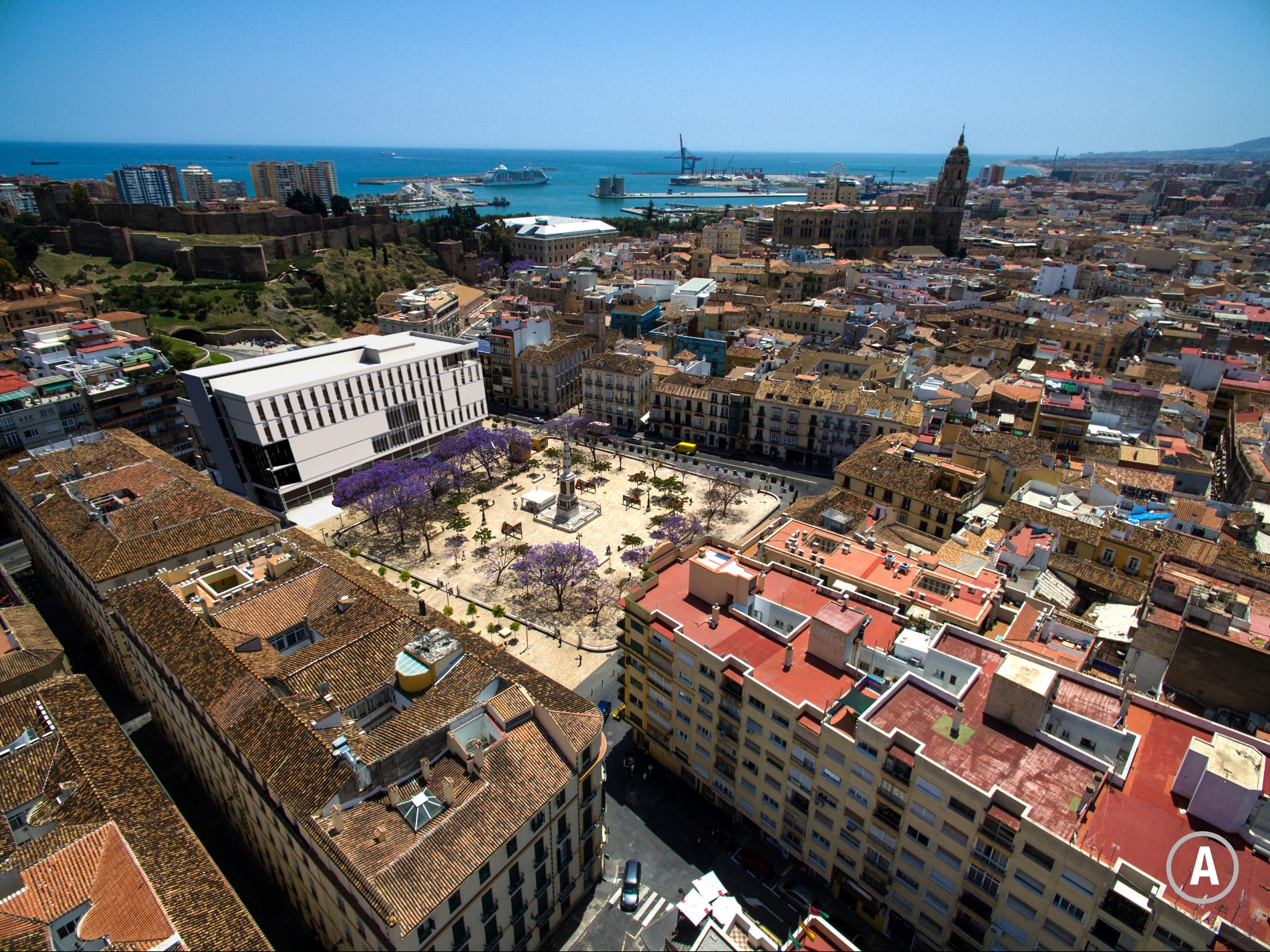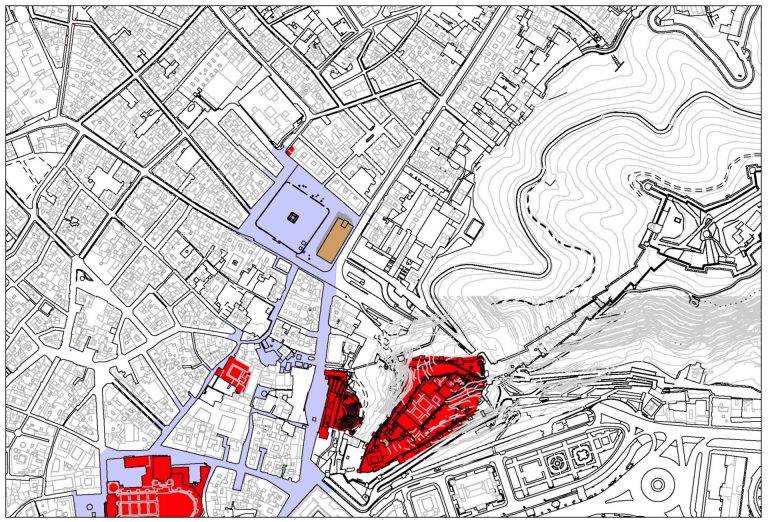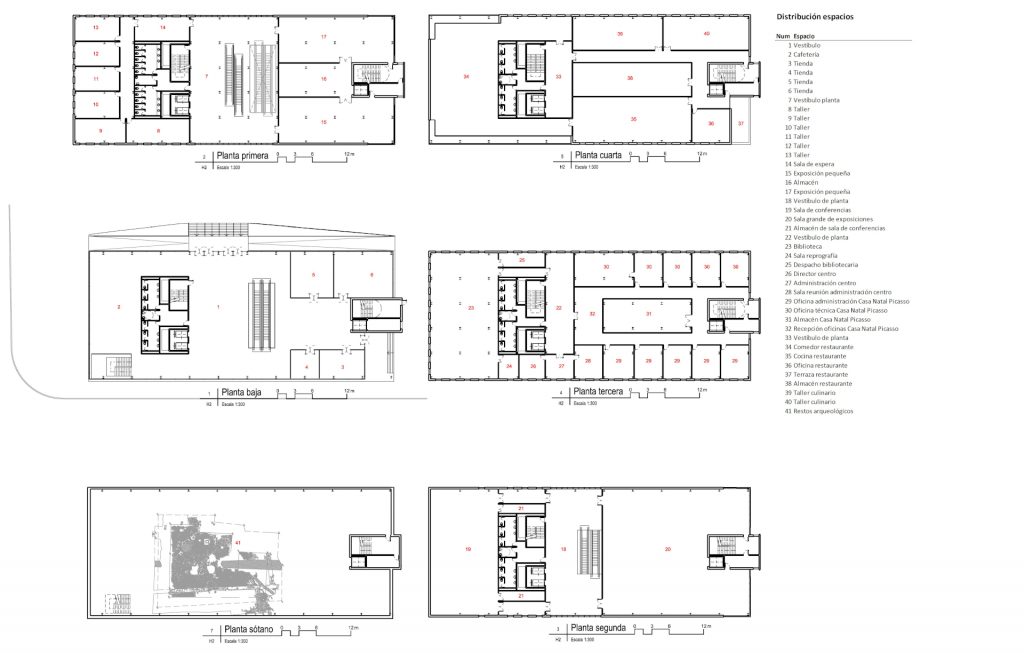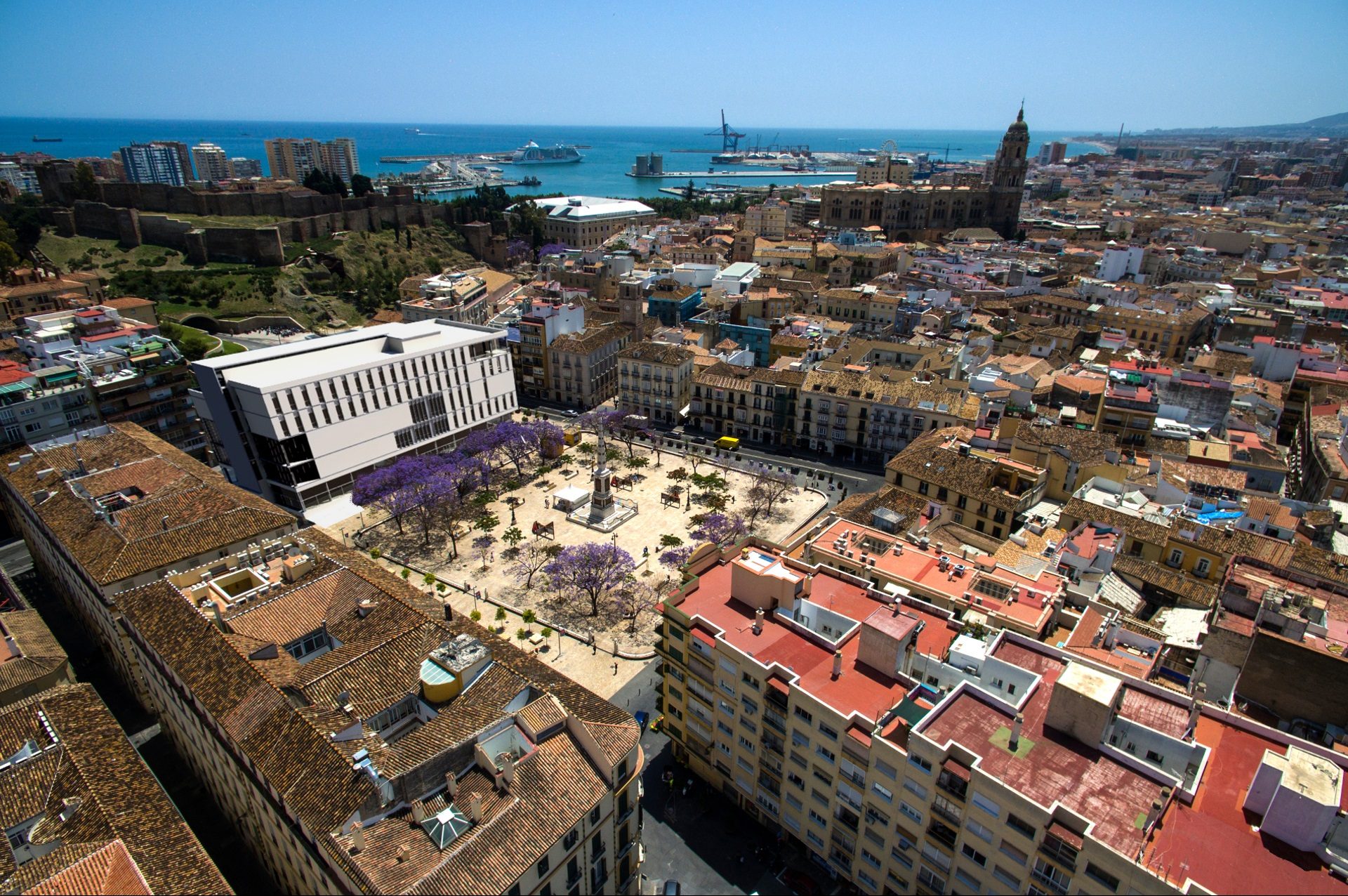When the building of the old Victoria Astoria cinemas of the city of Malaga is left unused, together with the building of houses located in the same block, the whole block is sold for the construction of luxury homes. Given the situation of this block located in the Plaza de la Merced, the City of Malaga decides to buy the whole apple with the idea of giving it a public use without determining. The Astoria Victoria contest proposed, not only the architectural project but also the use to which it would be destined and the economic viability of the project in order to carry out a second contest among the aspirants to commercially exploit the cultural complex.
In this case the project is proposed as a cultural use mainly where the preservation of archaeological remains is mixed for the public visit, an area on the ground floor related to the art world, other plants with offices for Picasso’s Birthplace, next to the building, a library specialized mainly in the work of Picasso, an exhibition hall, a conference room and classroom for workshops on Picasso’s work. Finally, on the top floor, a panoramic restaurant where you can see the Alcazaba on one side and the Plaza de la Merced on the other. Said restaurant would also have classrooms for workshops on gastronomy. The restaurant could also have access to the rooftop as a day and night bar with live music.
The ground floor is projected with a glass enclosure around its perimeter to produce a total transparency between the plaza of the mercy and the outside of the square. The building does not represent a visual obstacle between the square and the city, between the interior and the exterior of the building, becoming part of the interior of the building with the exterior, merging the plaza and ground floor of the building into a single entity.
The building has two circuits. On the one hand a circuit where goods and supplies would transit. On the other circuit all visitors would pass.
The economic viability was based on obtaining resources from the economic activity to finance the cultural uses available in the building for the citizens of Malaga. To this end, an Economic Feasibility Study was attached together with the proposal, as dictated by the bidding rules, since in order to evaluate the architectural proposal, it was essential to demonstrate the economic viability of the project. In this study an analysis was made of the investment to be made, the amortizations, expected revenues and expected expenses to finally reach an operating result for the next 35 years. Finally, an analysis of the economic and financial viability of the project was carried out through the NPV (Net Present Value) and IRR (Internal Rate of Return). Finally, conclusions were reached with the data provided that demonstrated the economic viability of the project.
ORIGINAL STATE







Images transferred by the organizing entity.
PROJECT


In this aerial view we see the change between the original building and the projected one. The clock of the animation will find it in the upper right part of the image. Normally if the mouse is placed on the image the animation stops.

Background and situation
The project presented is located on the site located in the Plaza de la Merced in the city of Malaga, former seat of the Astoria Victoria cinemas. The project is included in the entire block. It is intended to respond to the existing controversy over the use that should be given to the site. There are also archaeological remains not excavated in its entirety on the site.

Justification of the solution adopted
First, the project is located in the space occupied by the different buildings that made up the entire block. The alignments of the buildings of the square are sought, but it is observed that no building is strictly aligned with the center of the Plaza de la Merced, following each façade front with its own alignment.
Given this situation, a parallel alignment of the building with Victoria Street is proposed, following the alignment of the buildings on the same sidewalk. From there a rectangular plant is generated inside the boundaries of the site. The building will mark its own rules of composition framed in a rectangular plant, predominant in front of the environment.
The first action in the project is to think that the existing archaeological remains and those that are supposed to be found at the beginning of the excavation of the whole lot have to be protected. It must be preserved by historical memory, by research, by diffusion and as an attraction to the occasional visitor of the building. This decision entails the creation of a structure that places the pillars in the limits of the building so as not to destroy these archaeological remains. However, as soon as you have a detailed plan of the totality of the aforementioned remains found on the site, the placement of pillars in more central areas of the site could be considered again, if necessary.
Regarding the built plants, it is proposed to continue with the tender proposal, that is to say, ground floor plus three more floors, leaving the basement floor free for the visit to the archaeological remains.
On the top floor are the facilities and the building’s walkable roof.
Regarding the vertical circulations, two itineraries are established:
- For the visitor: Escalators to the second floor, elevators and stairs for all floors.
- For goods: Forklifts with independent access from the street and independent staircase. This communication is intended for the distribution of merchandise from the exhibitions and supplies of the restaurant on the fourth floor.
Justification of the facades
The facades are projected following a hollow-full relationship according to the surrounding buildings. The edges of the slabs are also marked as the cornices of the adjoining buildings.
On the facade of the Calle de la Victoria there is a setback in height as a transition between the adjacent building and the height of the new building.
In singular points it alternates with holes of another type to break the monotony of the hollow-full.
On the last floor there is already a continuous open space to have better views from the restaurant, delaying it a bit by means of a terrace, to avoid falling objects to the street. All the enclosures of the restaurant room are glazed, including the railing, to allow a better view of the views. Only the facade of calle Álamos is left blank for privacy with the homes opposite.
About the structure
As a consequence of the preservation of the archaeological remains and the uses that require large spaces without columns and others that allow them, a metal structure consisting of Vierendeel pillars and beams is finally chosen, which allows the placement of pillars on the floors where it is possible to place pillars. beams with a ridge that would occupy the entire height of the floor, leaving the lower floor without the need for beams or central pillars. For the bracing of the set there is a concrete core located in the vertical circulation of the forklift and another composed of crosses of San Andrés in the other stairwell and elevators. The knowledge of the totality of the archaeological rest to preserve can change or perfect the aforementioned structure.

